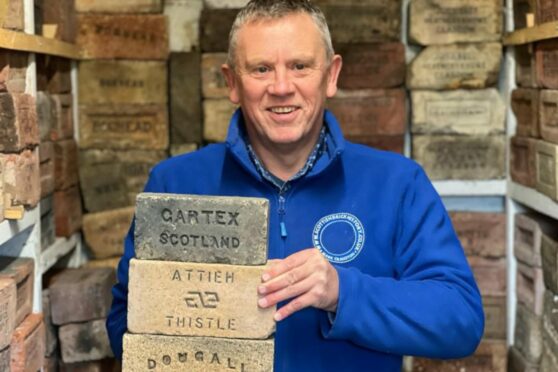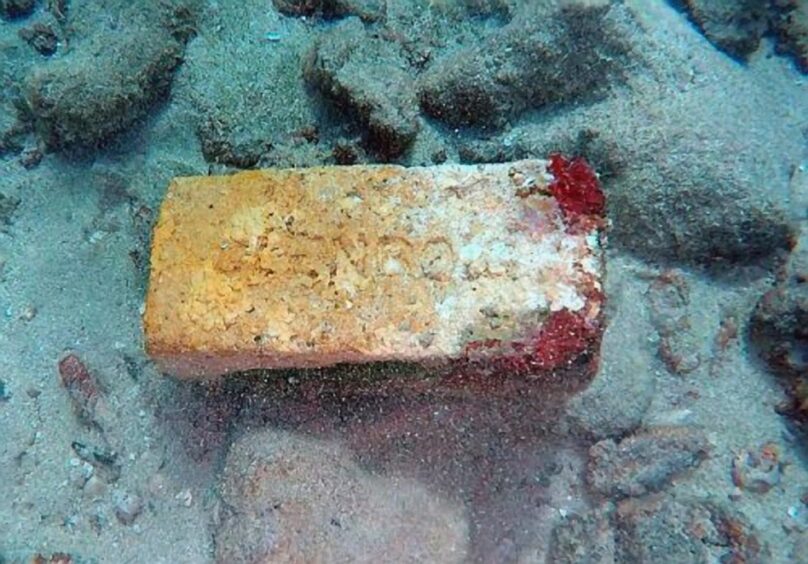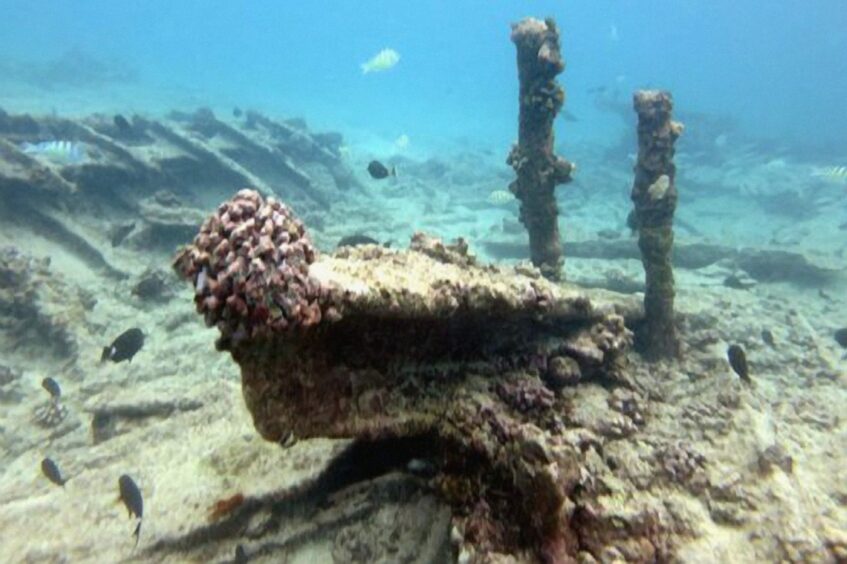
They may not have surfaced with a treasure chest overflowing with golden doubloons and divers’ bags crammed with diamonds and pearls.
The divers exploring a sunken wreck off the coast of Hawaii did, however, retrieve an even more precious treasure, well, to Mark Cranston at least: an old brick.
The retired police sergeant has been collecting Scottish bricks for 12 years and now has 4,000 in his shed, but he said the find from the wreck of the Eskbank, built in Glasgow in 1877, is a prize: “I was amazed when I heard from the Hawaii Undersea Research Laboratory and they told me they’d found bricks made in Glenboig and Gartcosh in Lanarkshire on the wreck of the Eskbank.
“An old newspaper cutting from the Hawaiian Gazette in 1878 said the ship had struck a reef, laden with a cargo of spirits, beer and machinery worth an estimated £4 million in today’s money.
“It had been at sea for 164 days travelling from Glasgow and was within five miles of the harbour at Diamond Head, O’ahu, Honolulu when it sank.
“Much of the cargo was recovered at the time, but the Glenboig and Gartcosh bricks were on their way to be used in the sugar plantations and were likely offloaded.”
The brick from beneath the Pacific waves has joined other prize possessions stamped with the names of the works where they were manufactured in places like Bonnyrigg, Glenboig and Gartcosh.
Cranston, who stores his haul in a garden shed, wants to open a museum to cement their history for future generations. During Scotland’s industrial heyday, fire and building bricks were churned out by more than 1,000 brick and tile works. Now only one brickwork remains, Raeburn in Blantyre, Lanarkshire, and the old bricks have become collectors’ items.
Cranston, 59, said: “It’s the history that fascinates me. Each brick has its own story to tell. It’s mind-blowing when you think about it but the Union Fireclay works at Glenboig were the biggest in the world by the end of the 19th Century. Fire bricks were used in different industries.
“Every steam engine required fire bricks, for example, whether it was for the fire box or the boiler lining. They were used in the Queen Mary on the boiler lining too.
“We weren’t first to make them but in terms of quality, our bricks were top notch. Industrialists from Scotland were setting off all over the world and were calling back home for supplies. That’s why so many of these bricks are now being discovered in far-flung places.”
Glenboig bricks were also found in a hut used by explorers on Ross Island, Antarctica. The collector said: “The explorer Robert Falcon Scott had built the hut during the Antarctic Expedition of 1901 to 1904. A brick pillar, using Glenboig bricks, had been erected to hold a seismograph in November 1902. It’s amazing to think of the part these bricks played in history.”
A rare fire brick stamped Bonnyrigg Patent, Midlothian, was found in St Petersburg, Russia, by another collector Vladimir Smirnov, 60, a retired physicist. He came to Scotland to return the brick. Cranston, of Jedburgh, in the Borders, said: “There are only two known bricks in existence which carry that mark.”
Smirnov, who has been collecting for 17 years, researched the brick online, realised it was Scottish and found Cranston’s website, scottishbrickhistory.co.uk. He said: “I had happened to be passing a building site as the city’s old barracks were being demolished. It was good to be able to bring the brick home. Mark returned the favour by giving me an Edinburgh brick for my collection.”
Bricks from A&T Bow, in Glasgow, were discovered in the foundations of a 19th-Century house in Bathurst, New Brunswick, Canada. Cranston said: “These were building bricks, not fire bricks, made in West Street, Tradeston. They had previously been used to build part of the cellar.”
Cranston met Melynda Jarratt, of the Doucet Hennessy House charity, who presented him with the rare brick for his collection. He said: “Not many bricks will have been manufactured in Scotland, shipped to Canada, carried out a working life and then been repatriated back to Scotland to retire. It was a fabulous gesture.”
His collection also includes a fire brick from the SS Politician, which sank near Eriskay in the Outer Hebrides in 1941, inspiring the film Whisky Galore!. He has a brick salvaged from the execution block at HMP Barlinnie in Glasgow… and the first ever Thistle brick made at Castlecary Fireclay Works, Lanarkshire, in 1904.
Cranston even has a brick he uses as a Christmas decoration. He said: “I have a fire brick stamped ‘snowball’ from the north-east of England which I bring out every year. ‘The snowball that never melts’ was their advertising slogan.”
He says wife Karen is all for his hobby as it “keeps him out of trouble”. Cranston, who started collecting after looking for an old brick to hold his shed door open, added: “I go on expeditions to find bricks all the time, just head off in the car. Karen has been with me twice.
“I’m more enthusiastic than she is, without a shadow of a doubt.”

Enjoy the convenience of having The Sunday Post delivered as a digital ePaper straight to your smartphone, tablet or computer.
Subscribe for only £5.49 a month and enjoy all the benefits of the printed paper as a digital replica.
Subscribe
